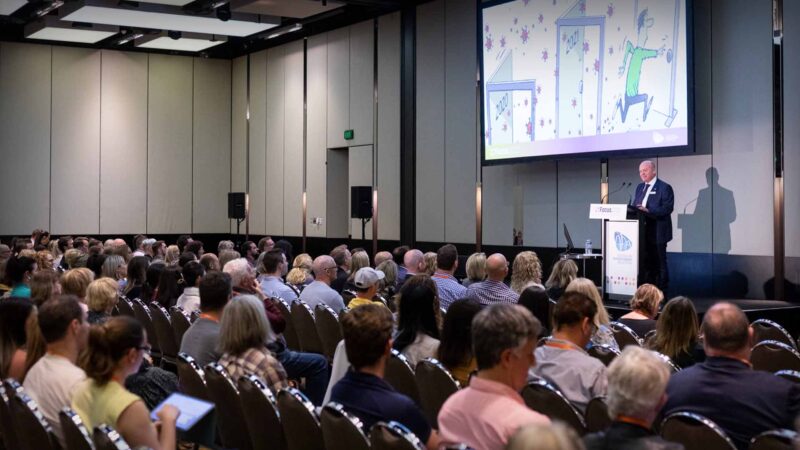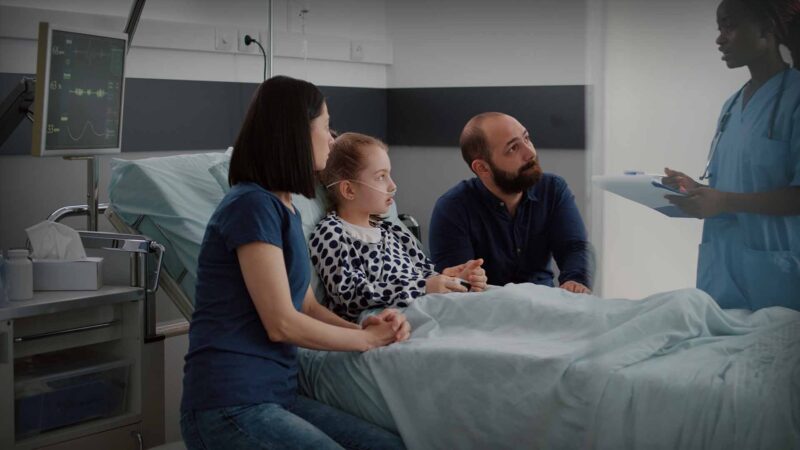CASE STUDY: METHODOLOGY IN BUILDING INFORMATION AND EDUCATION RESOURCES FOR A NATIONAL SCREENING PROGRAM Supporting participation paramount in the upcoming National Lung Cancer Screening Program
With
Dr Rachael Dodd
Senior Research Fellow,
The Daffodil Centre, a Cancer Council NSW & The University of Sydney Joint Venture
AUSTRALIAN HEALTH JOURNAL CASE STUDY
Filmed in Sydney | April 2025
At the recent Screening Conference 2025 in Sydney, hosted by Public Health Association, Dr Rachael Dodd, Senior Research Fellow at The Daffodil Centre, spoke about the information and educational resources created to increase awareness in the healthcare workforce and community on the upcoming Australia’s National Lung Cancer Screening Program commencing in July 2025.
A consortium including The Daffodil Centre, Lung Foundation Australia, Cancer Council Victoria and University of Melbourne were engaged by the Australian Government, through Cancer Australia to deliver a suite of information materials, workforce education resources, and a dissemination strategy for the Program, seen as paramount to support participation.
Dr Dodd talked to Australian Health Journal about the qualitative research process over the past 6 years, from a scoping review of existing lung cancer screening (LCS) information materials and messaging and an environmental scan of existing cancer screening program resources to inform initial development of the key messages, proposed information resources and the dissemination strategy. These were further developed through individual interviews and co-design workshops with the healthcare workforce and community members.
The scoping review identified 34 articles reporting strategies to increase awareness and knowledge of LCS. The environmental scan found 13 provider-focused resources and 18 consumer-focused resources across Australian screening programs. Most LCS-specific resources (18 sets) were from the United States, United Kingdom, Canada and Singapore.
Key ideas arising from the consultations (28 community; 35 health workforce) and co-design workshops (2 health workforce (n=41), 1 community (n=18)) were the need for: clear information about eligibility criteria, a pack-year smoking calculator, easy-to-read detail about the National Cancer Screening Register, examples of symptoms of lung cancer, clarity on referral pathways, a centralised website to host resources, videos of the screening process, guidance for ineligible participants, and managing conversations including smoking behaviours, and lung cancer stigma. Digital resources were generally preferred to paper resources.
Source: Adapted from Screening Conference 2025 Abstract Book
You Might also like
-
Understanding extracellular vesicles in cancer therapy research
Joy Wolfram is an Associate Professor at the Australian Institute for Bioengineering and Nanotechnology and the School of Chemical Engineering at the University of Queensland in Australia. Originally from Finland, she earned both her bachelor’s and master’s degrees in biology before transitioning to engineering with a PhD in nanotechnology completed in China. Wolfram has over a decade of experience working in hospitals in the United States before joining the University of Queensland.
Her research focuses on extracellular vesicles, which are crucial for cell communication both locally within tissues and over longer distances between organs. Her lab studies the roles of these vesicles in both health and disease, particularly in cancer. They investigate the harmful messages released by cancer cells that aid in tumour growth, specifically in breast cancer, while also exploring how to harness beneficial extracellular vesicles from healthy individuals as potential therapeutics.
-
Indigenous physio leadership
On the eve of NAIDOC week 2023, Australian Health Journal met with Scott Willis, the National President of the Australian Physiotherapy Association, a proud Palawa man and the first Indigenous President of the Australian health peak body.
-
Shaping Health, Advancing Nursing through training, upskilling & scholarships
The Chief Executive Officer of Australian College of Nursing, Adjunct Professor Kylie Ward FACN spoke in depth with Australian Health Journal about:
The key recommendations in ACN’s pre-budget submission to Federal Government
The impact of legislation requiring a Registered Nurse (RN) at every residential aged care facility from 1st July 2023
Why scholarships in nursing leadership are important
Why ACN has recommended the Government fund 200 Pacific nurses in 15 nations for the online ACN postgraduate certification
The need for a multi-pronged approach that includes skilled migration in rebuilding the nursing workforceIn the lead up to the Australian Federal Budget in May 2023, Australian Health Journal reached out to peak health industry bodies to hear about their priorities, either noted in pre-budget submissions lodged with Federal Government in January 2023 or in recent forums such as the Strengthening Medicare Taskforce.



